The Live Event Producer's Guide to the Sony NEX-FS100
Sony's NEX-FS100 presents challenges shooters never encounter with traditional camcorders, as well as different lens-mounting choices and caveats than DSLR shooters face. In this article we'll discuss the abilities and limitations of the FS100 for live event production work.
Lens Mounts
The native Sony E-mount is still very new and there are not yet many lens options available for this mount. This will change over the next few years because Sony's NEX line of translucent, mirror-interchangeable lens photo cameras are profitable for Sony and the company has committed to developing additional lenses for this mount. Unfortunately, for the time being, this limits FS100 users to a few E-mount lens options, all of which are variable aperture f/3.5-5.6 or even f/3.5-6.3 zoom lenses, so exposure changes dramatically when you change focal length.
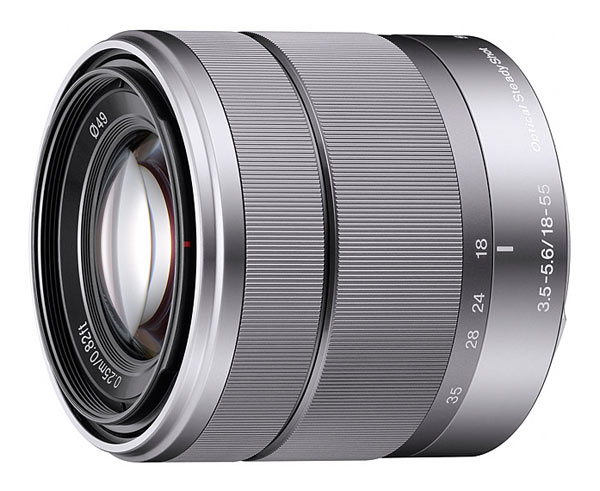
Sony E-mount 18-55mm f/3.5-5.6 zoom lens
If you use an E-mount lens, you change the iris with a wheel on the FS-100 body. Iris changes are smooth and click-free but the little iris wheel is not as easy to find and turn as the iris ring that I was accustomed to on the lens barrel of my previous video cameras, the Sony Z7U and Z5U.
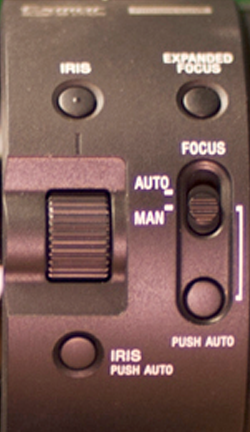
The iris wheel on the FS100
If your E-mount lens supports image stabilization (Sony calls its IS Steadyshot) then the FS100 body can power the in-lens stabilization. The FS100 also supports Contrast Detection Autofocus for E-mount lenses, which is the focus system that professionals avoid using on their video cameras as they are prone to focus hunting.
If it weren't for the lack of fast zoom lens options with a native E-mount, lens selection for the FS100 would be easy. Unfortunately, many FS100 shooters find the existing E-mount options too limiting.
All other lens mount options require an adapter. The most common are Nikon, Sony, and Canon, but adapters are available for several more mounts.
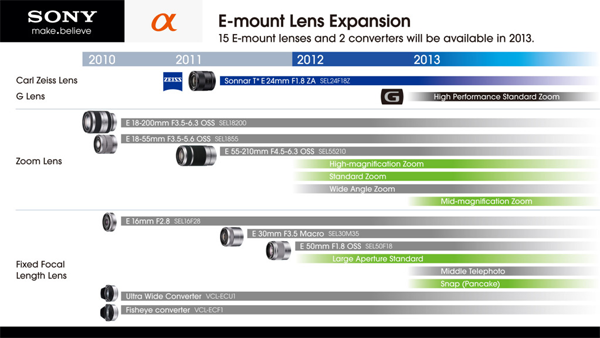
The Sony NEX lens roadmap. Source: http://www.sonyalpharumors.com/hot-new-sony-nex-lens-roadmap-need-help-for-translation/
Sony A-Mount Lenses
Sony DSLR lenses use the A-mount, and Sony makes two adapters for this lens, the LA-EA1 and the LA-EA2. The LA-EA1 is a smart adapter in that it has electronic contacts but it doesn't allow auto iris, auto focus, image stabilization, or transfer of EXIF data (display of focal length, aperture, and zoom range). It does allow electronic iris changes via the FS100's iris wheel but, unlike with E-mount lenses, it doesn't make those changes smoothly. With every click, the iris over-opens, momentarily slapping down on the iris stop. This means that you cannot change your iris while filming if you want the footage to be usable.
The LA-EA2 adapter is a newer smart adapter that adds a piece of technology from the NEX-line of cameras in its translucent mirror. The translucent mirror allows A-mount lenses (Sony and legacy Minolta Lenses) to autofocus using Phase Detection Autofocus, which is quick and is not prone to focus-hunting. It also allows push autofocus, but it remains to be seen if it can do this smoothly or if manual iris changes will be smooth enough to be used while recording. Sony has released some details on the FS100 firmware update that will support the LA-EA2 adapter on the FS100, but at this writing they have not commented recently on iris changes.
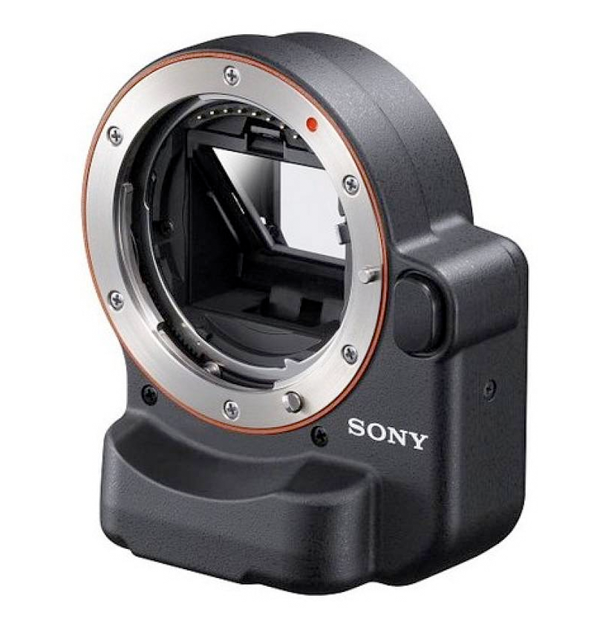
The Sony LA-EA2 adapter
If smooth iris changes are a must, then A-mount lens users can use a dummy adapter with a built-in iris ring. By this point you're probably getting the idea that there is no single solution that allows image stabilization, autofocus, smooth iris changes, and fast zoom lenses. Every solution is a trade-off.
Nikon Lenses
Nikon G lenses, like Sony lenses, can have their iris controlled with an iris ring on a dummy adapter. Non-G lenses have iris rings on the lens barrel that click. Both are improvements over the way the LA-EA1 adapter handles Sony A-mount iris changes but beyond that, there is no autofocus or image stabilization.
Canon Lenses
Initially, Canon lenses were the least compatible with the FS100 because you can change a Canon lens only electronically. I haven't tested any of the new adapters that address this issue, but Conurus has just started shipping an electronic one that allows both iris changes, image stabilization, and display of EXIF data. The Conurus adapter does not support Autofucus.
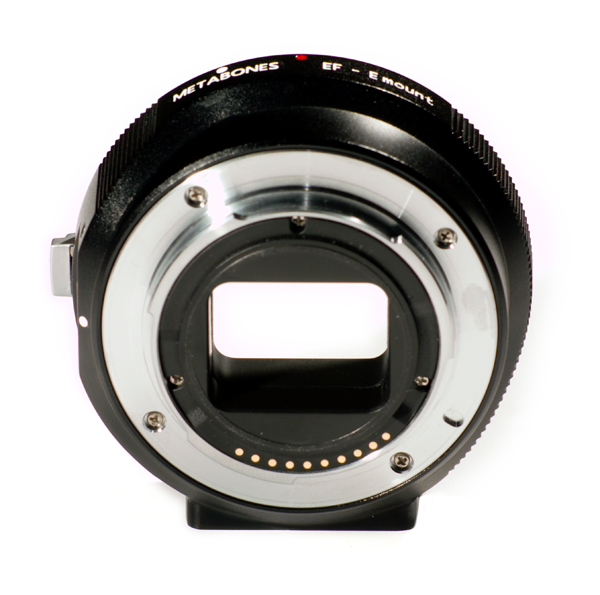
The new Conurus adapter is designed to enable smooth iris changes and electronic IS with Canon lenses mounted on the FS100.
Related Articles
Almost Live with Streaming Media reports from NAB 2014 with the latest on the Sony NEX-FS700R and new developments in the E-Mount lens ecosystem.
An in-depth interview on Sony's new 4K-capable large-sensor camcorder that generated tremendous buzz at NAB 2012 in Las Vegas this week.
New NXCAM designed for high-speed shooting and is capable of capturing footage at up to 960 fps; also features a range of capabilities such as 3G HD-SDI output and built-in ND filters; supports most DSLR 35mm lenses via E-Mount and adapters